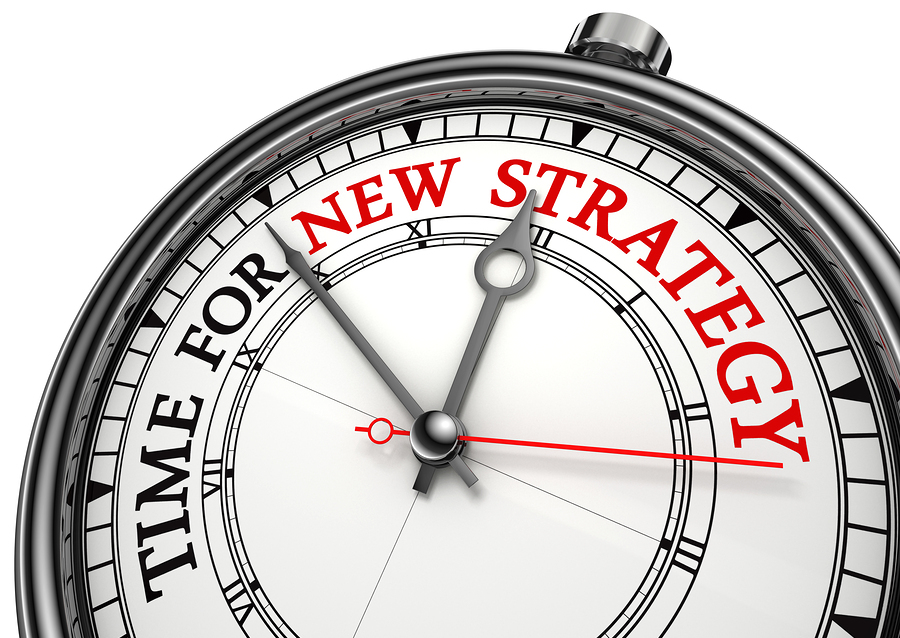The days of military-style strategy, when executives approached a business plan the way generals marshaled troops into battle, are long gone. As General Dwight D. Eisenhower was fond of saying, "No strategy ever survives first contact with the enemy." But Ike was also a lifelong proponent of planning: "I have always found plans useless, but planning indispensable," he said.

Ike's views might seem contradictory, but they're actually anything but. Strategy needs to be formulated carefully. However, strategies also should be agile enough to change when the assumptions underlying them do the same. To shape an effective strategy, you first need to know who you are: the strengths and weaknesses of your business plan, its competitive advantages, what your rivals are doing, market conditions, and countless other internal and external factors.
In a competitive landscape that's moving faster every day, knowing who you are as a middle market company and knowing where you're going are two different things. Fortunately, middle market companies have a clear "agility advantage" over larger rivals when adapting their strategies: They have less of the process and bureaucracy that slow change at those big, lumbering enterprises.
Stanford Business School Professor Robert Sutton offered a wise approach to "agile strategy" that intentionally embraces the "messiness and uncertainty" of today's business climate. "Companies that have the right [strategic] balance have the ability to act with confidence based on what they know, combined with the ability to doubt what they know," Sutton told the NCMM. "You need to improvise depending on what's happening in front of you and be ready to change if things aren't working."
Here are five warning signs that middle market strategists should look for in gauging the state of their business:
1. Growing pains. Maybe your strategy was formulated when you were a different company. Organizations, like people, are organic and dynamic. The shirt that fit you when you were 13 likely won't fit when you're 33. Companies plateau at a certain point, and strategy needs to adapt to accommodate this. Maybe you've developed a game-changing product or service that has put you into a better competitive position, but your strategy hasn't fully integrated this new reality. As companies mature, so must their strategy.
San Francisco-based middle market company Torani Syrups and Flavors was a family-run business for decades. But as it planned expansion in the early 1990s, it decided to bring in its first-ever outside CEO, Melanie Dulbecco, to avoid the inter-generational squabbling that sometimes hampers family businesses. It worked, as Dulbecco led the company into a period of double-digit growth.
Signs that you've outgrown your current strategy include spikes in revenues that can't be sustained, problems with lead times and deliveries of your products or services, and dropping levels of customer and employee satisfaction and retention. Sometimes your strategy simply isn't scalable and needs to be tossed like a pair of pants that no longer fit.
2. Big external changes in your market. The faster your market, competitors, and customers move, the faster you'll need to adapt. This goes for the regulatory climate, too. Pay attention to what's happening outside so that you can develop new capabilities internally, as needed. If a small competitor in your market is doing things differently, pay attention, because eventually it could disrupt your market and leave you flat-footed. Is a new law under discussion that would add more process and cost to your business? Have a plan in place and be ready to adapt as soon as the law takes effect. Is a large competitor gobbling up small and middle market companies? You could be its next target, so have a plan in case you're in the crosshairs.
3. You are relying significantly on a few big customers. If most of your revenues are coming from one or a few big customers, you are exposed to massive risk, and you need to adjust your strategy accordingly. You could work to lock in these big customers via long-term commitments, which they'll fight, or you could seek to diversify your customer base. Doing both simultaneously may make the most sense. Diversifying also helps you better understand your market and your core competencies, as well as preventing you from being "captured" by a big customer.
4. You are competing on price alone. The strategic danger here is obvious, as companies with better economies of scale can simply outcompete you on price. Getting into a price war will erode your margins, force you to cut internal costs, and leave you with no revenues to reinvest in growing your middle market business. It's a vicious race to the bottom in which nobody wins. Instead, you should be differentiating your products and services in other ways.
Look carefully at your customers' needs, because low cost is only one factor, and often it's not the most important. Look at technology, service, distribution, customer segmentation, and all points where competitive advantage can be gained. Torani Syrups and Flavors, for instance, expanded its customer base and grew revenues by creating smoothie bases as well as expanding its retail reach. This innovation strategy led to rapid growth.
5. Once you formulate a strategy, you think you're done. Again, strategic thinking is never done. Your company and markets change day by day. The big danger is believing that your strategy is all set and won't need to be changed as you go along. More and more, the secret to great strategy is knowing your objectives and adapting your efforts to changing circumstances in real time. The worst strategy of all may be the one you're committed to a bit too much.
Boston-based Chuck Leddy is an NCMM contributor and a freelance reporter who contributes regularly to The Boston Globe and Harvard Gazette. He also trains Fortune 500 executives in business-communication skills as an instructor for EF Education. Circle him on Google+.